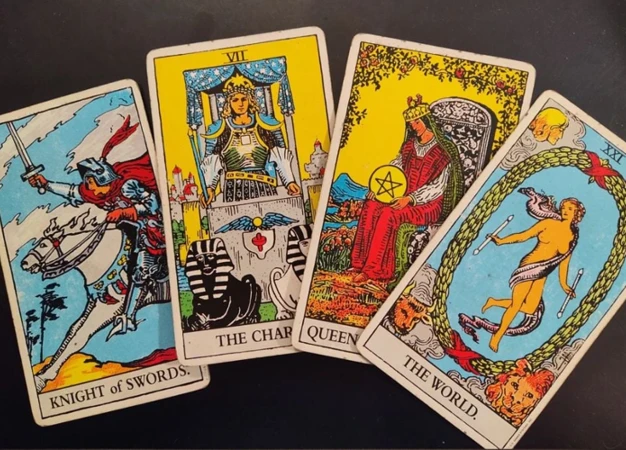For those seeking guidance and relief from anxiety, the realm of tarot offers a fascinating connection. The ancient practice of tarot reading has long been known for its ability to tap into intuition, provide insights, and offer a sense of clarity. This article will explore the intricate relationship between tarot and anxiety, delving into the basics of tarot, the impact of anxiety on our well-being, and how tarot can be used as a powerful tool for healing and self-reflection. We will also delve into specific tarot cards that are particularly relevant for anxiety, practical ways to use tarot for anxiety relief, and how tarot can be combined with other therapeutic techniques. So dive into the mystical world of tarot and discover the transformative connection it holds for those seeking solace in the shadows of anxiety.
Contents
- Understanding Tarot
- Anxiety and its Impact
- The Power of Tarot in Healing Anxiety
- Specific Tarot Cards for Anxiety
- How to Use Tarot for Anxiety Relief
- Working with a Tarot Reader
- Combining Tarot with Other Therapeutic Methods
- Conclusion
- Additional Resources
-
Frequently Asked Questions
- 1. Can tarot cards predict the future?
- 2. Is tarot reading a form of fortune-telling?
- 3. Do you need psychic abilities to read tarot cards?
- 4. Are tarot cards associated with any specific religion?
- 5. Can tarot cards provide guidance during difficult times?
- 6. Can tarot readings help with decision-making?
- 7. Can tarot cards reveal hidden aspects of oneself?
- 8. Can tarot readings provide emotional support?
- 9. Is it necessary to believe in tarot for it to be effective?
- 10. Can tarot readings be done remotely?
- References
Understanding Tarot
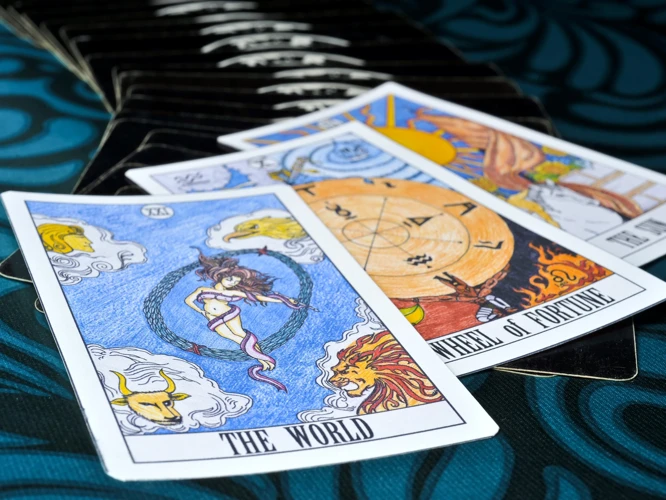
Tarot is an ancient divination tool that dates back centuries. It consists of a deck of 78 cards, each with its own unique imagery and symbolism. The deck is divided into two main sections – the Major Arcana and the Minor Arcana. The Major Arcana consists of 22 cards that represent significant life lessons and spiritual growth. The Minor Arcana is comprised of 56 cards, divided into four suits – Cups, Pentacles, Swords, and Wands – each representing different aspects of human experience.
Interpreting tarot cards is a highly intuitive process that can be approached in a variety of ways. Each card carries its own meaning, which can be influenced by its position in a spread and the surrounding cards. Tarot readers use their intuition, knowledge of symbolism, and personal connection to the cards to decipher the messages they convey. The interpretation of tarot cards may also vary based on the question or issue being explored.
Tarot readings can offer guidance, clarity, and perspective on various aspects of life, including love, career, and personal growth. These readings can help individuals gain insight into their current situations and make informed decisions moving forward. While tarot cannot predict the future with certainty, it can illuminate potential paths and possibilities, empowering individuals to navigate challenges and embrace opportunities.
To gain a deeper understanding of the connection between tarot and anxiety, it is important to explore the nature of anxiety itself and its impact on our well-being.
The Basics of Tarot
Tarot holds a world of mystique and symbolism, but at its core, it is a divination tool with a rich history. The deck consists of 78 cards, each with its own unique meaning and symbolism. These cards are divided into the Major Arcana and the Minor Arcana. The Major Arcana represents significant life lessons and spiritual growth, while the Minor Arcana embodies everyday experiences and situations. When conducting a tarot reading, the reader taps into their intuition and knowledge of symbolism to interpret the cards and provide guidance. By understanding the basics of tarot, such as the different suits and their meanings, as well as the significance of the Major Arcana cards, individuals can unlock the wisdom and messages that tarot has to offer. To delve deeper into tarot’s ability to provide strength and resilience in the face of anxiety, explore the link here.
Interpreting Tarot Cards
Interpreting tarot cards is a deeply intuitive process that requires a combination of knowledge, intuition, and personal connection to the cards. Each card in the tarot deck carries its own unique symbolism and meaning, and understanding how to interpret them is key to gaining insight and guidance.
When interpreting tarot cards, it is important to consider the specific card in question, its position in the spread, and the surrounding cards. The imagery, symbols, and colors depicted on the card can provide valuable clues and insights into its meaning. For example, the Strength card represents inner strength, resilience, and courage in the face of challenges. It encourages individuals to tap into their inner power, find the strength within themselves, and confront their fears head-on. This card can be particularly relevant for those seeking guidance and support in managing anxiety. (To learn more about the Strength card and its connection to anxiety, you can visit this link.)
Another important aspect of interpreting tarot cards is the intuitive connection that the reader has with the cards. This connection allows the reader to tap into their intuition and receive messages and insights beyond the traditional meanings of the cards. Intuition plays a significant role in tarot readings, guiding the reader to uncover hidden truths and provide personalized guidance for the individual seeking answers.
It’s worth noting that interpreting tarot cards is not an exact science, and different readers may have varying interpretations based on their personal experiences and perspectives. It is this diversity of interpretation that allows tarot readings to be highly personalized and tailored to the individual’s unique circumstances. (To explore how tarot can offer guidance in anxiety-provoking situations, you can check out this link.)
Ultimately, interpreting tarot cards is a deeply personal and individualistic process. It is a combination of knowledge, intuition, and connection to the cards that allows the reader to unlock the wisdom and guidance they hold. Whether seeking clarity, support, or insight during times of anxiety, tarot can be a powerful tool for self-discovery and understanding. (For more information on finding clarity and support with tarot during times of anxiety, you can visit this link.)
Anxiety and its Impact
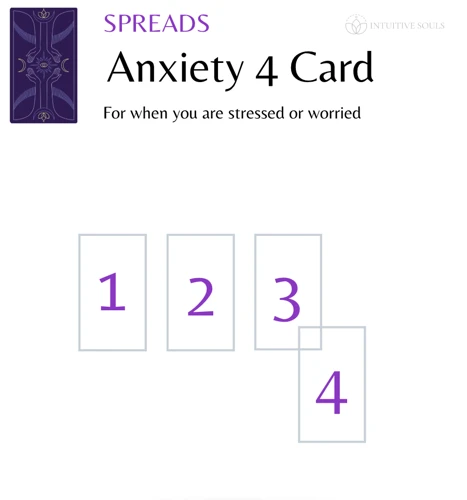
Anxiety is a natural response to stress and perceived threats. It is characterized by feelings of fear, worry, and apprehension. While occasional feelings of anxiety are normal, persistent and excessive anxiety can significantly impact an individual’s daily life and overall well-being.
Anxiety can manifest in both physical and emotional symptoms. Common physical symptoms include increased heart rate, difficulty breathing, muscle tension, and restlessness. On an emotional level, anxiety can lead to persistent feelings of unease, irritability, difficulty concentrating, and sleep disturbances.
Anxiety can also have a profound impact on one’s mental health, leading to a heightened sense of vulnerability, low self-esteem, and a sense of being overwhelmed. It may interfere with personal and professional relationships, limit one’s ability to engage in enjoyable activities, and hinder personal growth and development.
Understanding the impact of anxiety is crucial in exploring how tarot can be used as a powerful tool for healing and alleviating its effects.
What is Anxiety?
Anxiety is a complex and multifaceted emotion that affects millions of people worldwide. It is characterized by feelings of unease, worry, and fear, often accompanied by physical symptoms such as rapid heartbeat, trembling, and difficulty breathing. Anxiety can manifest in various forms, including generalized anxiety disorder, social anxiety disorder, and panic disorder. It is important to note that experiencing occasional anxiety is a normal part of life, but when anxiety becomes persistent and impacts daily functioning, it may indicate an anxiety disorder.
The Physical and Emotional Effects of Anxiety
Anxiety, both a common and complex mental health condition, can have profound effects on both our physical and emotional well-being. Physically, anxiety can manifest in various ways. It can cause physical symptoms such as rapid heartbeat, shortness of breath, chest tightness, muscle tension, and sweating. Some individuals may also experience gastrointestinal issues, headaches, and fatigue.
Emotionally, anxiety can create a wide range of feelings, including fear, restlessness, irritability, and a sense of impending doom. It can lead to difficulty concentrating, excessive worrying, and a constant state of unease. Anxiety can also disrupt sleep patterns, leading to insomnia or restless nights.
The effects of anxiety can extend beyond the individual experiencing it, impacting their relationships, work performance, and overall quality of life. It can lead to social isolation, difficulty in making decisions, and a lack of enjoyment in activities that were once pleasurable.
Understanding the physical and emotional toll that anxiety takes on individuals is crucial in exploring how tarot can serve as a powerful tool for healing and finding solace in times of anxiety.
The Power of Tarot in Healing Anxiety
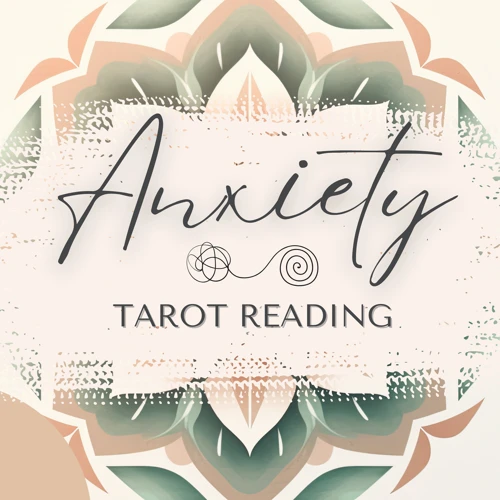
Tarot has a powerful impact on healing anxiety by tapping into intuition and providing a space for self-reflection and insight. When we experience anxiety, we often feel disconnected from ourselves and overwhelmed by our thoughts and emotions. Tarot can help us reconnect with our inner wisdom and provide a sense of calm amidst the chaos.
One way tarot aids in healing anxiety is by tapping into intuition. By engaging with tarot cards, we are accessing our unconscious knowledge and intuition. The images and symbols on the cards act as a mirror, reflecting our inner thoughts, emotions, and desires. This intuitive connection helps us gain a deeper understanding of the root causes of our anxiety and guides us towards finding solutions and healing.
Another way tarot assists in healing anxiety is through self-reflection and insight. Tarot readings encourage individuals to explore their thoughts, feelings, and experiences in a non-judgmental and introspective manner. The cards serve as prompts for self-reflection, encouraging individuals to consider different perspectives and explore new possibilities.
Tarot offers a sense of empowerment and agency in managing anxiety. The act of consulting tarot cards puts the individual in charge of their own healing journey. It allows for a proactive and participatory approach, where individuals can actively engage with their anxieties and work towards finding resolutions.
To further understand the connection between tarot and anxiety relief, it is helpful to explore specific tarot cards that hold significance in addressing anxiety.
Tapping into Intuition with Tarot
Tapping into intuition is a fundamental aspect of using tarot as a tool for self-reflection and healing. When working with tarot cards, it’s essential to trust your instincts and allow your intuition to guide you in interpreting the messages they convey. By quieting the rational mind and connecting with your inner wisdom, you can access deeper insights and gain a better understanding of your anxieties. Intuition acts as a bridge between the conscious and unconscious mind, helping you uncover hidden emotions and underlying causes of anxiety. It’s important to listen to the subtle whispers of your intuition, as it can provide profound guidance and open up new perspectives. By embracing your intuitive abilities, you can tap into the transformative power of tarot to navigate the complexities of anxiety and cultivate a deeper sense of self-awareness and healing.
Using Tarot for Self-Reflection and Insight
- Self-Reflection: Tarot can be a powerful tool for self-reflection, offering the opportunity to delve deep into one’s thoughts and emotions. By drawing cards and considering their meanings, individuals can gain insights into their subconscious mind, uncover hidden patterns, and explore their desires and fears.
- Introspection: Tarot encourages introspection by prompting individuals to ask themselves thought-provoking questions related to their current circumstances and challenges. The cards act as a mirror, reflecting back the truths that may be difficult to acknowledge but are necessary for personal growth.
- Uncovering Patterns: By observing recurring cards or themes in different readings, individuals can identify patterns in their lives. These patterns can highlight areas of strength, areas in need of growth, or repeated cycles that may contribute to anxiety. Recognizing these patterns opens the door to making positive changes.
- Gaining Clarity: Tarot provides a fresh perspective on situations, helping individuals see beyond their immediate circumstances. The cards can uncover underlying motivations, offer alternative viewpoints, and encourage individuals to consider new possibilities. This clarity can alleviate anxiety by dispelling confusion or indecision.
- Embracing Empowerment: Tarot empowers individuals to take ownership of their lives and make conscious choices. By connecting with their intuition and trusting the messages from the cards, individuals can tap into their inner wisdom and find the strength to navigate anxiety-inducing situations with confidence.
Using tarot for self-reflection and gaining insight allows individuals to develop a deeper understanding of themselves, their aspirations, and the underlying causes of their anxiety. It invites them to take an active role in their healing journey and embrace a sense of empowerment.
Specific Tarot Cards for Anxiety
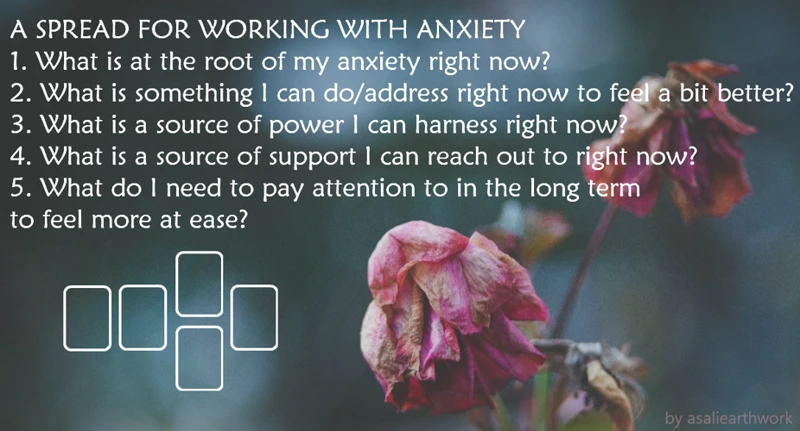
The Moon Card:
The Moon card is deeply connected to the realm of emotions and the unconscious mind, making it a powerful card for addressing anxiety. This card represents the unseen fears, doubts, and illusions that often contribute to anxious feelings. The Moon encourages introspection and invites individuals to explore their deep-rooted emotions and fears. It reminds us to trust our intuition and face our anxieties head-on, knowing that they hold valuable lessons for personal growth. The Moon also suggests the need for self-care and nurturing during times of anxiety, reminding us to prioritize our emotional well-being.
The Tower Card:
The Tower card may seem alarming at first glance, but it carries an important message when it comes to anxiety. This card depicts a crumbling tower, symbolizing the breakdown of old beliefs and structures. In the context of anxiety, the Tower represents the need to release self-imposed limitations and destructive thought patterns. It encourages individuals to embrace change and let go of what no longer serves them, creating space for growth and transformation. While the Tower can be a challenging card to encounter, it signifies the opportunity for a fresh start and the potential for profound healing.
The Nine of Swords Card:
The Nine of Swords card captures the essence of anxiety in a poignant way. It portrays a figure sitting up in bed, consumed by worry and negative thoughts. This card represents the mental anguish and fear that often accompany anxiety. It serves as a reminder that our worries are often exaggerated and that we have the power to release ourselves from the grip of anxiety. The Nine of Swords invites individuals to confront their fears and seek support. It encourages seeking solace in trusted loved ones, therapists, or healers. This card reminds us that we are not alone in our struggles and that by reaching out for help, we can find relief and healing.
These specific tarot cards offer valuable insights and guidance for navigating anxiety. Incorporating them into a tarot reading or meditating on their symbolism can provide a unique perspective on the challenges and opportunities presented by anxiety. However, it is important to remember that tarot serves as a tool for self-reflection and should not replace professional help or medical advice.
The Moon Card
The Moon card is a significant tarot card that holds relevance for individuals experiencing anxiety. Depicted with a serene moon shining over a landscape, this card often symbolizes our subconscious mind and the hidden emotions and fears that lie within. It represents a time of uncertainty and illusions, reminding us that anxiety can often stem from our own perceptions and interpretations. The Moon card offers an invitation to delve deeper into our subconscious, to explore our fears and anxieties, and to embrace the unknown with courage and resilience. It encourages us to trust our intuition and to navigate through the shadows, knowing that clarity and serenity are within our reach. When the Moon card appears in a tarot reading, it serves as a gentle reminder to confront our anxieties, gain a deeper understanding of ourselves, and find strength from within to face any challenges that may arise.
The Tower Card
The Tower card is one of the most powerful and impactful cards in the tarot deck, especially in the context of anxiety. Its imagery often depicts a tall tower being struck by lightning, causing destruction and chaos. The Tower represents sudden upheaval, change, and the breaking down of old structures and beliefs.
When the Tower card appears in a tarot reading related to anxiety, it serves as a strong symbol of the need for change and transformation. It signifies that the current situation or mindset is no longer serving us and that a radical shift is necessary for growth and healing.
The Tower card is a reminder that holding on to old patterns and beliefs can further perpetuate anxiety and prevent personal evolution. It urges individuals to confront their fears and release any attachments that no longer serve their well-being.
While the appearance of the Tower card may initially induce feelings of fear or discomfort, it holds the potential for positive transformation. It can serve as a wake-up call to break free from self-limiting beliefs, destructive patterns, and unhealthy relationships or situations that contribute to anxiety.
Embracing the energy of the Tower card can facilitate the rebuilding of one’s life on stronger foundations, promoting resilience and personal growth. Just as the tower collapses to make space for a new beginning, the Tower card invites individuals to embrace the opportunity for change and to view life’s challenges as stepping stones towards a more authentic and fulfilling existence.
The Nine of Swords Card
The Nine of Swords card is a powerful and evocative card in the tarot deck, especially when it comes to anxiety. In imagery, it often depicts a figure sitting up in bed with their head in their hands, appearing distressed and burdened by worry. This card represents the overwhelming nature of anxiety and the tormenting thoughts that can consume our minds.
Symbolically, the Nine of Swords card speaks to feelings of guilt, regret, and self-criticism that often accompany anxiety. It shows the impact of negative thought patterns and how they can exacerbate anxiety levels. The card reminds us that anxiety is not only about the external circumstances but also the internal battles we face within our own minds.
When this card appears in a reading, it serves as a reminder to acknowledge and confront our anxieties head-on. It encourages us to examine our negative thoughts and beliefs, questioning their validity and assessing if they are contributing to our anxiety. The Nine of Swords calls for self-compassion and self-forgiveness, reminding us that we are only human and that it is okay to make mistakes.
In terms of interpreting this card, it often signifies a period of intense worry and sleepless nights. However, it also holds a message of hope, urging individuals to seek support and help from loved ones or professionals. It encourages them to find healthy coping mechanisms and release the burden of anxiety. Through self-reflection and a willingness to address our fears, the Nine of Swords can guide individuals towards healing and a sense of peace.
To fully utilize the power of the Nine of Swords card in combating anxiety, it can be helpful to engage in journaling exercises, meditation, or seek guidance from a tarot reader or therapist. By actively working with the energy of this card, individuals can learn to confront their anxieties, transform negative thought patterns, and ultimately find relief and resilience amidst the struggles of anxiety.
How to Use Tarot for Anxiety Relief
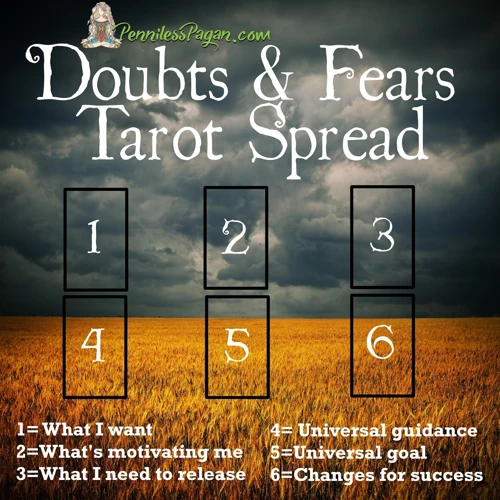
Using tarot for anxiety relief can be a powerful and soothing practice. One way to incorporate tarot into your anxiety relief routine is by creating a calming tarot ritual. Find a quiet and comfortable space where you can focus and relax. Light a candle or some incense to create a calming atmosphere. Shuffle the tarot cards while focusing on your intention to find relief from anxiety. Take a moment to ground yourself and then draw a card. Reflect on the card’s imagery and symbolism, allowing it to guide you towards insights and solutions for your anxiety. You can repeat this ritual whenever you feel the need for guidance and support.
Another effective way to use tarot for anxiety relief is by incorporating journaling into your tarot practice. After drawing a card, write down your initial thoughts and impressions of the card’s meaning and how it relates to your anxiety. Explore any emotions or memories that arise as you contemplate the card’s message. Use the tarot card as a prompt for self-reflection, allowing your thoughts and feelings to flow freely onto the journal pages. This process can help you gain clarity, release emotions, and uncover deeper insights into your anxiety. Regular journaling with tarot can provide a valuable outlet for processing your anxiety and fostering personal growth.
Creating a Calming Tarot Ritual
Creating a calming tarot ritual can be a powerful way to center yourself and find solace in times of anxiety. Begin by setting the space with candles, incense, or calming essential oils to create a peaceful ambiance. Take a few moments to ground yourself and connect with your breath. Shuffle the tarot deck while focusing on your intention to find calm and clarity. Once you feel ready, draw a card that represents the energy or guidance you seek. Reflect on the card’s symbolism and how it relates to your current state of mind. Consider journaling your thoughts, emotions, and any insights that arise from this process. This ritual can serve as a sanctuary, allowing you to tap into your intuition and find comfort in the wisdom of the tarot. Experiment with different variations of this ritual and discover what works best for you in finding peace amidst anxiety.
Journaling with Tarot
- Reflecting on Card Meanings: Journaling with tarot involves selecting a card from your deck and taking some time to reflect on its meaning. Write down your initial impressions, any emotions or thoughts that arise, and any personal connections you feel with the card’s symbolism. Allow yourself to dive deep into the imagery and symbolism, exploring how it relates to your current experiences or emotions.
- Recording Insights and Intuitions: As you delve into the card’s meaning, pay attention to any insights or intuitive messages that come to you. These can be personal revelations, aha moments, or connections you make between the card and your life. Write these down in your journal, capturing both the thoughts and emotions that arise. This process can help you gain clarity and perspective on matters that might be causing anxiety.
- Exploring Emotions and Triggers: Anxiety often stems from deep-rooted emotions and triggers. Journaling with tarot allows you to explore these emotions and understand the triggers that may be causing your anxiety. Write about any emotional reactions you have to the card, any memories or experiences it brings up, and any patterns or themes you notice. By making connections between the card and your emotions, you can uncover underlying causes of anxiety.
- Setting Intentions and Affirmations: You can also use journaling with tarot as a tool for setting intentions and affirmations. After reflecting on a card’s meaning and exploring your emotions, write an affirmation or intention that aligns with this card and addresses the anxiety you’re experiencing. For example, if you drew the Strength card, you might write an affirmation like, “I am strong and capable of overcoming my anxieties.” Repeat this affirmation daily or whenever you feel anxious.
- Tracking Progress and Patterns: Journaling with tarot provides a way to track your progress and identify patterns over time. Keep a record of the cards you draw, the insights you gain, and any changes you notice in your anxiety levels. This can help you observe patterns and trends, as well as recognize shifts in your mindset and emotional well-being. It can also serve as a reminder of the healing journey you’re on and the progress you’ve made.
Journaling with tarot is a deeply personal and introspective practice that can support your healing and self-discovery journey. It allows you to engage with the cards on a deeper level, tapping into your intuition and uncovering valuable insights about yourself and your anxiety. Whether you choose to write free-form reflections or follow a structured journaling template, this practice can be a powerful tool for self-reflection and growth.
Working with a Tarot Reader
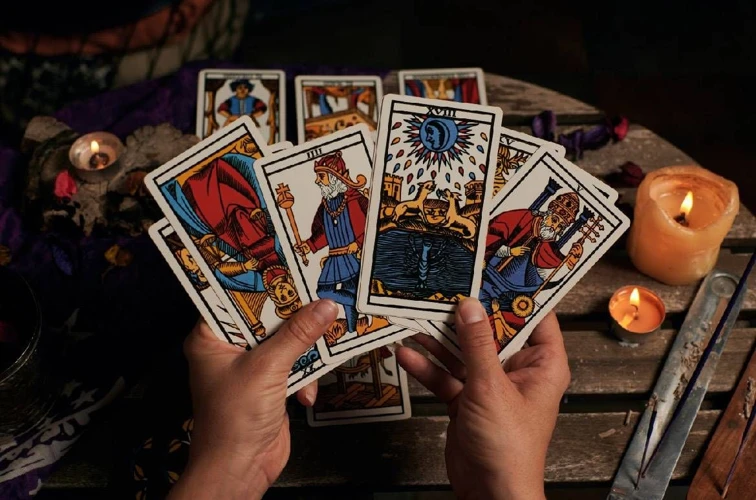
Choosing the right tarot reader is essential for a beneficial and insightful experience. Here are some key points to consider when seeking out a tarot reader:
- Qualifications and Experience: Look for a tarot reader who has received formal training and certification. Their experience and expertise will ensure a quality reading.
- Specialization: Some tarot readers specialize in specific areas such as love and relationships, career, or personal development. Consider what aspect of your life you want guidance on and find a reader who specializes in that area.
- Referrals and Reviews: Seek recommendations from friends or online communities for trusted tarot readers. Reading reviews and testimonials can also help gauge the reader’s credibility and the quality of their readings.
- Connection and Comfort: Trust your intuition when choosing a tarot reader. It’s important to feel comfortable and have a connection with the reader to ensure a positive experience.
Once you have chosen a tarot reader, it’s helpful to know what to expect during a tarot reading:
- Setting the Intention: Before the reading begins, the tarot reader will usually ask you to state your intention or ask a specific question. This helps focus the reading on the areas you seek guidance on.
- Card Selection: The tarot reader will shuffle the deck and ask you to select a specific number of cards or allow you to draw cards randomly. This process helps establish a connection between you, the reader, and the cards.
- Card Interpretation: Once the cards are selected, the tarot reader will interpret their meanings based on the cards’ individual symbolism and their placement in the spread. They will provide insights, guidance, and potential outcomes.
- Question and Discussion: During the reading, the tarot reader may ask questions to clarify specific concerns or delve deeper into certain aspects. It’s important to be open and engaged in the discussion to make the most of the reading.
Remember that a tarot reader’s role is to guide and provide insights; the ultimate decision-making lies with you. Approach the reading with an open mind and use the information gained as a tool for self-reflection and personal growth.
Choosing the Right Tarot Reader
When choosing a tarot reader to work with, it’s essential to find someone who aligns with your energy and intentions. The first step is to research and read reviews or testimonials about different tarot readers to get a sense of their style and approach. Consider whether you prefer someone who focuses on intuitive guidance or someone who provides a more structured interpretation of the cards. It’s also important to consider the reader’s expertise and experience. Some readers specialize in certain areas such as love and relationships or career guidance, so finding someone who has knowledge and understanding of your specific concerns can be beneficial. Trust your instincts and choose a tarot reader who resonates with you and creates a comfortable and safe space for exploration and healing.
What to Expect in a Tarot Reading
- Open and Welcoming Atmosphere: When you go for a tarot reading, you can expect to be greeted by a warm and inviting environment. Tarot readers strive to create a safe space where you feel comfortable sharing your thoughts and concerns.
- Discussion of Your Questions and Intentions: Before the reading begins, the tarot reader will typically ask you about the questions or intentions you have for the session. This sets the focus and helps to ensure that the reading addresses your specific concerns.
- Card Selection: The tarot reader will either ask you to shuffle the cards or they will do it themselves. This step helps to establish a personal connection between you and the cards. Once the cards are shuffled, the reader will lay them out in a specific spread or arrangement.
- Card Interpretation: As the reader begins to interpret the cards, they will explain the symbolism, meaning, and potential insights each card holds. They may also ask you questions or encourage you to offer your own interpretations, fostering a collaborative conversation.
- Opportunity for Questions: At different points during the reading, the tarot reader will likely encourage you to ask questions or seek clarification on any areas you find confusing or particularly intriguing. This allows for a more interactive and personalized experience.
- Guidance and Insights: Throughout the reading, the tarot reader will provide guidance, insights, and possible paths forward based on the cards and their interpretation. They will help you make connections between the cards and your own life, offering suggestions for personal growth and self-reflection.
- Closing the Reading: Once the reading is complete, the tarot reader will summarize the main points discussed and offer any final thoughts or advice. They may also leave you with suggestions for further exploration or self-care.
A tarot reading can be a transformative experience, providing you with new perspectives, reassurance, and guidance. It’s important to approach the reading with an open mind and a willingness to explore the messages that come through the cards. Remember, the ultimate power lies within you, and tarot serves as a tool to tap into your own intuition and inner wisdom.
Combining Tarot with Other Therapeutic Methods
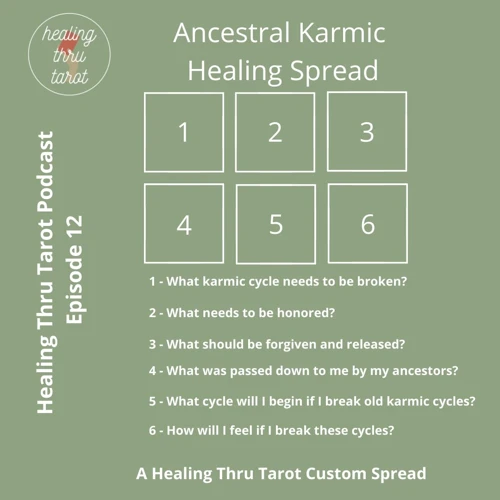
Combining tarot with other therapeutic methods can enhance the healing and self-reflection processes. Here are two effective ways to integrate tarot with other therapeutic techniques:
- Meditation and Tarot: Meditation can create a calm and focused mindset, making it a natural companion to tarot. Begin by selecting a tarot card that resonates with your current state or area of concern. Settle into a comfortable position, close your eyes, and take a few deep breaths to center yourself. Visualize the chosen card in your mind’s eye, allowing its energy to envelop you. Reflect on the symbolism and meaning of the card as you meditate. This practice can deepen your connection with the card and invite further insights and intuition.
- Visualization Techniques with Tarot: Visualization is a powerful tool for manifestation and inner transformation. Start by selecting a tarot card that represents your desired outcome or the energy you wish to embody. Close your eyes and visualize the card in vivid detail. Imagine yourself stepping into the card, fully immersing yourself in its symbolism and energy. Engage all your senses to make the visualization experience as vivid as possible. This practice can help you align your thoughts, emotions, and actions with your desired outcomes, bringing positive change and relief from anxiety.
By combining tarot with these therapeutic methods, you can deepen your connection with the cards, access your intuition, and facilitate healing and personal growth. Remember, the key is to approach these practices with an open mind and trust in your own inner wisdom.
Next, we will explore the conclusion of this article, summarizing the key points discussed and highlighting the transformative potential of tarot in managing anxiety.
Meditation and Tarot
Meditation and tarot complement each other beautifully in the journey of self-discovery and anxiety relief. By integrating meditation practices with tarot, individuals can deepen their connection to the cards and enhance their intuition. One way to incorporate meditation with tarot is to begin the reading session with a few moments of quiet reflection. This allows the mind to settle, creating a receptive state for receiving insights from the cards. Additionally, meditation can be used as a tool for grounding and centering oneself before and after a tarot reading, helping to calm any anxious thoughts or emotions that may arise during the process. Through the combination of meditation and tarot, individuals can cultivate a sense of inner peace, mindfulness, and self-awareness, providing a valuable resource for managing anxiety.
Visualization Techniques with Tarot
Visualization techniques can be a powerful tool to enhance the experience of working with tarot cards and promote anxiety relief. Visualizing the images and symbols on the cards helps to deepen the connection with the subconscious mind and tap into the intuitive guidance that tarot provides.
One technique is to select a tarot card that resonates with the desired outcome or emotional state, such as the calming imagery of the Temperance card. Take a moment to study the card’s details, colors, and symbols. Close your eyes and imagine yourself embodying the energy and qualities of the card. Visualize yourself in a peaceful and harmonious state, drawing strength and tranquility from the card’s imagery.
Another visualization technique involves using the tarot cards as a visual aid during meditation. Choose a card that represents a positive quality or emotion you wish to cultivate, such as the Empress card for nurturing energy. Begin by sitting in a quiet space and holding the card in your hand, focusing on its image. Close your eyes and visualize yourself surrounded by the energy depicted in the card. Breathe deeply and imagine absorbing that energy into your being. Allow yourself to feel a sense of calm and serenity as you connect with the essence of the card.
Additionally, visualization can be incorporated into journaling exercises with tarot. After selecting a card that represents an aspect of anxiety you wish to understand or overcome, write down a detailed description of the card’s image. Then, close your eyes and visualize yourself stepping into the scene portrayed on the card. Immerse yourself in the environment, noticing the sights, sounds, and sensations. As you journal, let your imagination flow and write about your experience, exploring any insights or revelations that arise.
By combining visualization techniques with tarot, individuals can deepen their connection to the cards and use the power of their imagination to promote relaxation, self-reflection, and healing. These techniques provide a unique way to engage with the symbols and archetypes of the tarot, unlocking new layers of understanding and support in the journey towards anxiety relief.
Conclusion
The connection between tarot and anxiety is a multi-faceted one, offering individuals a unique and transformative approach to understanding and healing their anxiety. Through the power of tarot, individuals can tap into their intuition, gain self-reflection and insight, and find solace in the symbolism and guidance of the cards. Tarot can serve as a supportive tool for those seeking relief from anxiety, providing a sense of clarity, comfort, and empowerment.
While tarot is not a substitute for professional help or treatment for anxiety, it can complement therapeutic methods and provide an additional avenue for self-exploration and growth. Whether it’s through creating calming tarot rituals, journaling with tarot, or working with a trusted tarot reader, the possibilities for using tarot as a tool for anxiety relief are endless.
By combining the wisdom of tarot with other therapeutic techniques such as meditation and visualization, individuals can further deepen their healing journey and cultivate a greater sense of peace and resilience in the face of anxiety.
So, embrace the world of tarot, and allow yourself to explore the profound connection between tarot and anxiety. Whether you’re seeking guidance, clarity, or simply a different perspective, tarot has the potential to offer profound insights, support, and healing along the way.
Additional Resources:
Additional Resources
For those interested in further exploring the connection between tarot and anxiety, there are several valuable resources available:
- The Strength and Resilience of Tarot for Anxiety: This insightful article delves into how tarot can provide strength and resilience in times of anxiety. It explores the empowering aspects of tarot and how it can aid in navigating challenging situations. Read more
- Tarot Guidance for Anxiety-Inducing Situations: Anxiety can be triggered by specific situations or events. This resource offers guidance on using tarot for support and clarity in anxiety-inducing situations. Learn how to tap into the wisdom of tarot and find solace during difficult times. Read more
- Finding Clarity and Support with Tarot in Times of Anxiety: This comprehensive guide explores different ways in which tarot can provide clarity, support, and a sense of calm during times of anxiety. Discover practical tips and techniques for using tarot as a tool for self-exploration and healing. Read more
These resources offer valuable insights and guidance for incorporating tarot into your journey of healing and managing anxiety. Whether you are a beginner or an experienced tarot enthusiast, these articles will help deepen your understanding and engagement with the transformative power of tarot.
Frequently Asked Questions
1. Can tarot cards predict the future?
Tarot cards cannot predict the future with absolute certainty. Instead, they offer potential insights and guidance based on the current energies and influences in a person’s life.
2. Is tarot reading a form of fortune-telling?
While tarot reading may seem similar to fortune-telling, it goes beyond simply predicting future events. Tarot is a tool for self-reflection, personal growth, and gaining a deeper understanding of oneself and the world around us.
3. Do you need psychic abilities to read tarot cards?
No, you do not need to be psychic to read tarot cards. Anyone can learn to read tarot by studying the symbolism of the cards and developing their intuition.
4. Are tarot cards associated with any specific religion?
Tarot cards themselves are not tied to any particular religion. They are a tool for personal introspection and can be incorporated into spiritual practices of various faiths, or approached from a secular perspective.
5. Can tarot cards provide guidance during difficult times?
Yes, tarot cards can offer guidance and support during challenging periods. They can provide insights and different perspectives, helping individuals navigate obstacles and find potential solutions.
6. Can tarot readings help with decision-making?
Yes, tarot readings can be a valuable tool for decision-making. They can shed light on the potential outcomes of different choices and help individuals weigh their options more effectively.
Yes, tarot cards can reveal hidden aspects of oneself. They can bring subconscious thoughts and feelings to the surface, offering a deeper understanding of one’s motivations, fears, and desires.
8. Can tarot readings provide emotional support?
Absolutely. Tarot readings can offer emotional support by providing validation, clarity, and alternative perspectives. They can help individuals process and navigate their emotions in a meaningful way.
9. Is it necessary to believe in tarot for it to be effective?
Belief in tarot is not necessary for it to be effective. The power of tarot lies in its ability to tap into one’s intuition and offer insights. The cards can still provide valuable guidance, regardless of one’s beliefs.
10. Can tarot readings be done remotely?
Yes, tarot readings can be done remotely. With the advancements in technology, tarot readers can offer readings over the phone or through online platforms. Distance does not hinder the effectiveness of the reading.
